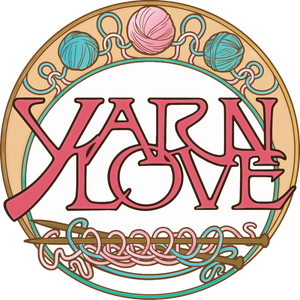How to Cast On Socks: Finding the Right Start for Your Perfect Pair
Starting a new pair of socks is always exciting—the colors, the stitches, the cozy promise of what’s to come. But before you dive into the rhythm of knitting, you’ll need to cast on. And when it comes to socks, your cast-on really matters. The right technique gives your cuff just the right stretch, so your socks feel as good as they look.
Today, we’ll walk through some of the most popular sock cast-ons, with a few friendly recommendations to help you choose the one that feels best in your hands.
Top Down Socks
Top-down construction is one of the most common ways to knit socks. The big consideration here? You’ll want a cast on that’s stretchy enough for your cuff—no one wants to wrestle a sock onto their foot, or worse, feel pinched around the ankle.
Here are some tried-and-true cast-ons for top-down socks:
1x1 Tubular Cast On
The tubular cast-on is the gold standard if you want a polished, professional-looking edge. It blends beautifully into ribbing, giving your cuff a neat finish and plenty of stretch. It can be a little fiddly at first, but once you’ve practiced, the payoff is absolutely worth it. Think of it as a small detail that makes a big impact.
Recommended resource: Drea Renee Knits Video
Long Tail Cast On
A classic for a reason—the long tail cast on is quick, sturdy, and versatile. While it isn’t the stretchiest method, many knitters already know it by heart, which makes it an easy go-to. And if you want more stretch, you can try its cousin, the German Twisted Cast On.
Recommended resource: Sheep & Stitch Video
Knitted Cast On
Simple and approachable, the knitted cast on is a great option for knitters who want to get started without fuss. While it’s not the stretchiest choice, it’s reliable and perfect if you want to practice with something familiar.
Recommended resource: Stephen West Video
German Twisted Cast On
A favorite of many sock knitters, this cast on is wonderfully stretchy, strong, and a touch fancy with its little twist. It’s particularly well-suited to socks where comfort and durability matter most.
Recommended resource: Knitting.com Video
Toe Up Socks
Prefer to knit from the toe up? This method gives you control over the length of your sock and often makes it easier to use up every last bit of yarn. Many knitters begin with a provisional cast on, and one of the most beloved versions is:
Judy’s Magic Cast On
True to its name, this cast on feels like magic! It creates a seamless, graft-free toe that looks tidy and professional. It can feel a little tricky at first, but once you’ve mastered it, you’ll never look back. The result? Smooth, comfortable toes that are as nice to wear as they are to knit.
Recommended resource: Very Pink Knits Video
A Gentle Reminder
Casting on socks for the first (or fiftieth!) time can feel a little fiddly. Take a deep breath, slow down, and permit yourself to start over if you need to. The right cast on will quickly become second nature.
At Yarn Love, we believe confident sock knitting starts here —and that includes the very first stitch. Whether you’re drawn to the polish of a tubular cast on, the familiarity of the long tail, or the magic of Judy’s seamless toe, there’s a method that’s just right for you.
So pick up your yarn, choose your favorite cast on, and get ready to create socks full of color you can feel and joy in every stitch.

